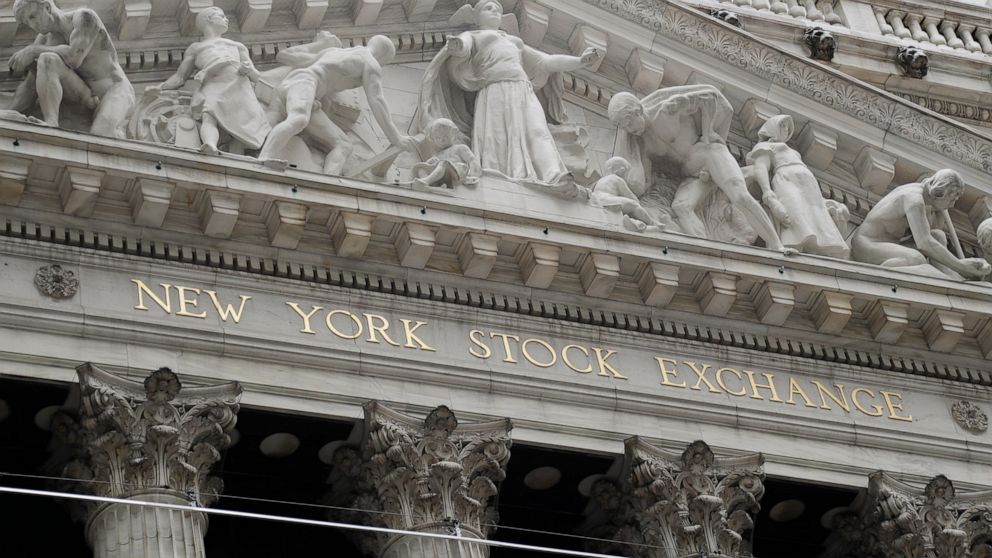[ad_1]
Stocks tumbled again on Wednesday as worries about a weakening global economy boomeranged around the world.
Interested in Stock Market?
Add Stock Market as an interest to stay up to date on the latest Stock Market news, video, and analysis from ABC News.
For a second straight day, the S&P 500 dropped to its worst loss in five weeks. The latest wave of selling came after a report showed hiring by U.S. companies slowed more than economists expected last month, with mining and manufacturing particularly weak. It added to worries that shook markets a day earlier, when a reading on U.S. manufacturing showed the sharpest contraction in a decade.
The reports underscored that President Donald Trump’s trade war with China is continuing to drag on exports and raised the worry that the weakness could spill over into other areas of the economy. The concerns sent markets around the world reeling, with losses sweeping from the United States on Tuesday into Asia and through Europe on Wednesday.
The S&P 500 lost 52.64 points, or 1.8%, to 2,887.61. It was the first back-to-back loss for the index of more than 1% since late last year, when fears about a possible recession seized markets.
The Dow Jones Industrial Average fell 494.42, or 1.9%, to 26,078.62, and the Nasdaq composite dropped 123.44, or 1.6%, to 7,785.25.
Adding to the market’s uncertainty was a ruling by the World Trade Organization that cleared the United States to impose tariffs on up to $7.5 billion of goods from the European Union to make up for illegal subsidies given to plane-maker Airbus. The Trump administration said it would begin them on Oct. 18.
Even investors who are optimistic that the U.S. economy isn’t facing an imminent recession were struck by Tuesday’s surprisingly weak manufacturing report.
“Manufacturing, that data point does give me further pause,” said Adrian Helfert, director of multi-asset portfolios at Westwood.
The weakness puts an even brighter spotlight on the federal government’s more comprehensive report on the jobs market, which is scheduled for Friday. It measures hiring across the economy, and economists expect it to show an acceleration in hiring last month.
If hiring remains strong, it would support what’s been the stalwart of the economy despite the trade war: healthy consumer spending. If households continue to spend, it can lead to a cycle where stronger sales for companies push them to invest more in their businesses, which creates more jobs and leads to even more consumer spending.
“We still are a consumption-led economy,” Helfert said. “I’m watching that very closely. I am looking for that virtuous cycle.”
Another report that could move markets is Thursday’s reading on the U.S. service sector. Further down the calendar, U.S. and Chinese envoys are expected to discuss their trade disputes next week, and markets have been quick to move on any hint of the chances of a possible deal between the world’s largest economies.
But the weaker-than-expected reports so far this week have rattled investors.
Prices fell across the stock market Wednesday, and all 11 sectors that make up the S&P 500 lost ground from stodgy utilities to go-go technology companies. Roughly seven stocks fell for every two that rose on the New York Stock Exchange.
In search of safety, investors piled into U.S. government bonds and sent yields sliding for a second straight day. Gold also rose, while oil sank after a report showed that the amount of crude supplies in inventories swelled last week.
Investors also increased their bets that the Federal Reserve will slash interest rates at its next meeting to shield the economy from slowing growth abroad and the effects of the trade war.
Markets are pricing in a 75% probability that the Fed will cut short-term rates by half a percentage point at its Oct. 29-30 meeting. A week ago, markets were seeing it closer to a coin flip’s chance. The Fed hasn’t cut rates by that large a margin since the financial system was melting down in 2008.
Financial stocks were laggards Wednesday as bond yields continued to slide. Lower interest rates can crimp the profits banks make from lending, and the yield on the 10-year Treasury fell to 1.60% from 1.64% late Tuesday.
European markets also dropped more than U.S. indexes, with Germany’s DAX losing 2.8%, France’s CAC 40 dropping 3.1% and the FTSE 100 in London down 3.2%.
Japan’s Nikkei 225 slipped 0.5%, South Korea’s Kospi fell 2% and the Hang Seng in Hong Kong dipped 0.2%.
Benchmark crude oil fell 98 cents to settle at $52.64 a barrel. Brent crude oil, the international standard, fell $1.20 to close at $57.69 a barrel. Wholesale gasoline fell 2 cents to $1.55 per gallon. Heating oil declined 3 cents to $1.87 per gallon. Natural gas fell 3 cents to $2.25 per 1,000 cubic feet.
Gold rose $19.00 to $1,501.00 per ounce, silver rose 39 cents to $17.59 per ounce and copper rose 1 cent to $2.56 per pound.
The dollar fell to 107.22 Japanese yen from 107.73 yen on Tuesday. The euro strengthened to $1.0958 from $1.0936.
[ad_2]
Source link

